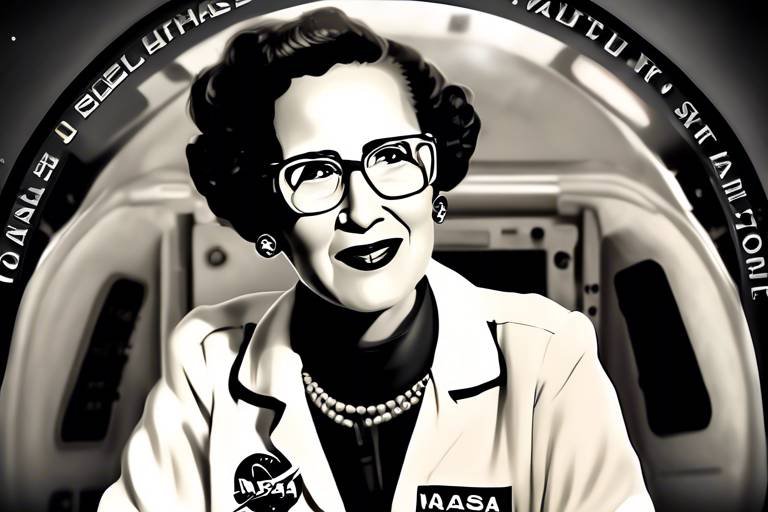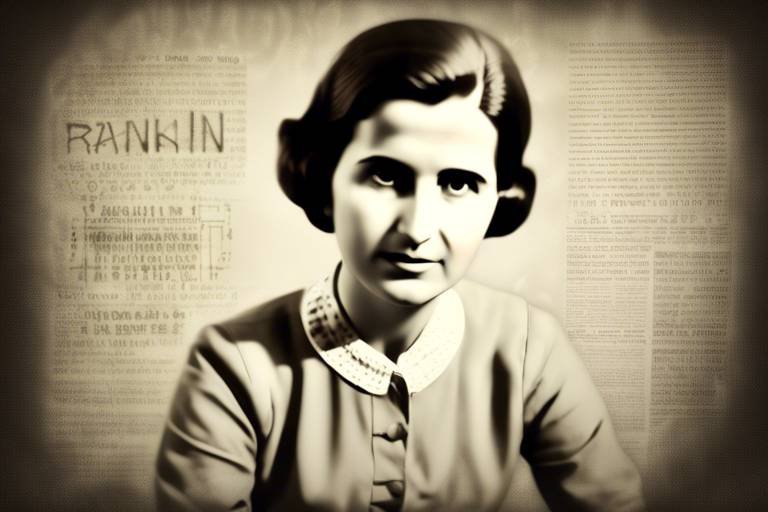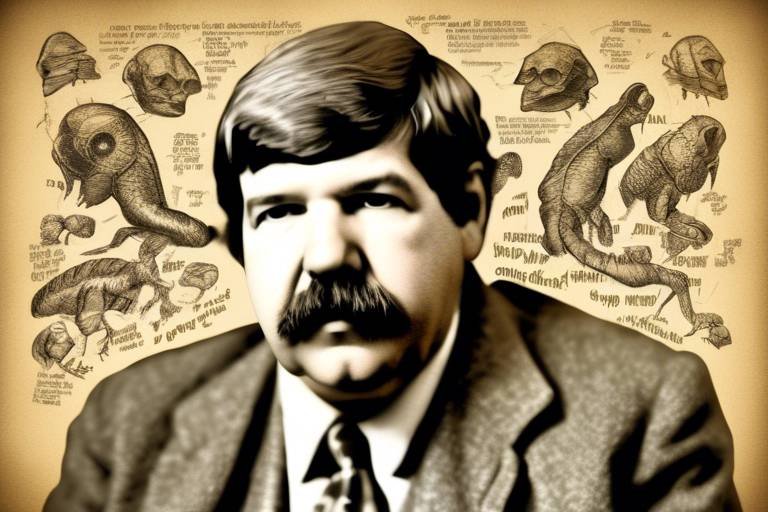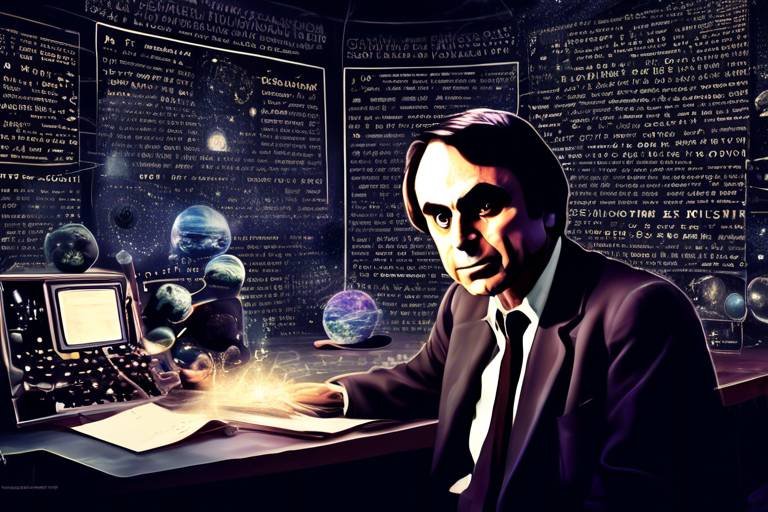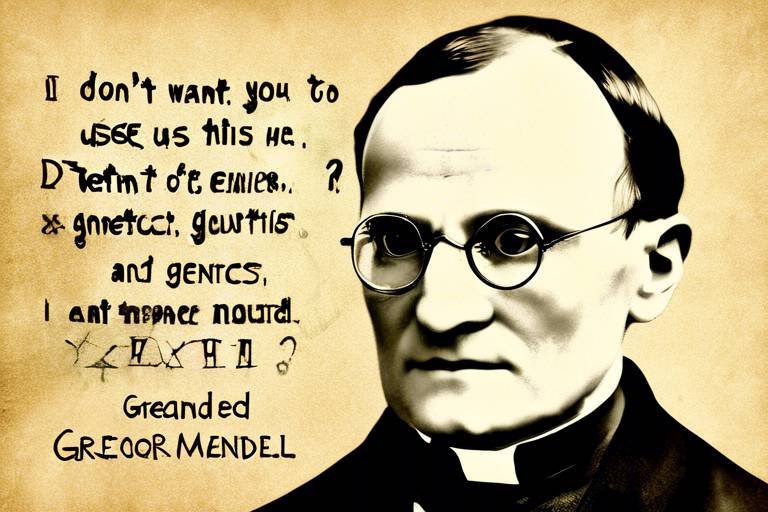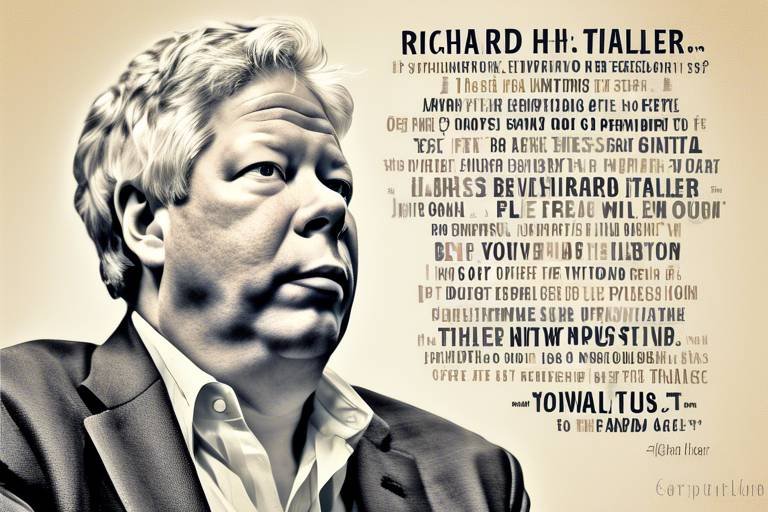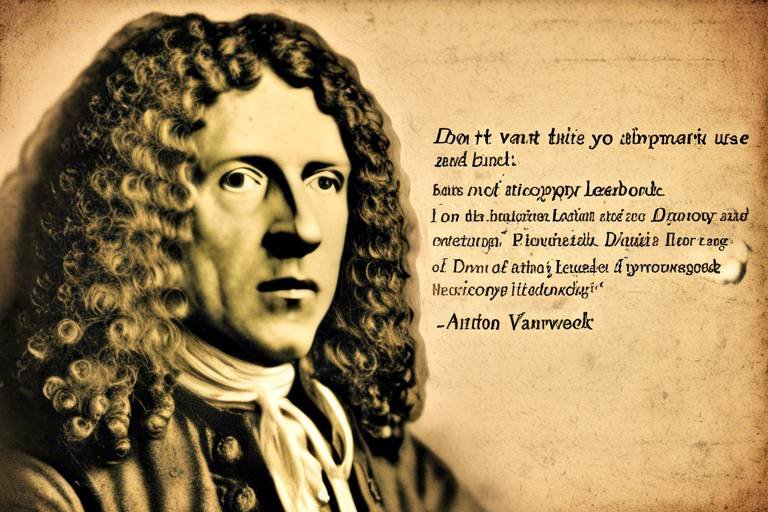The Discoveries of Nikola Tesla in Electricity
Nikola Tesla, a name synonymous with innovation and creativity, has left an indelible mark on the world of electricity. His groundbreaking contributions have not only shaped the way we generate and utilize power but have also paved the way for the technological advancements we enjoy today. Imagine a world where electricity flows seamlessly, powering our homes, industries, and communication systems—this vision was largely made possible by Tesla's relentless pursuit of knowledge and his uncanny ability to think beyond the conventional norms of his time.
Born in 1856 in Smiljan, Croatia, Tesla exhibited an insatiable curiosity and a remarkable aptitude for understanding complex scientific concepts from a young age. His early education in engineering and physics laid the foundation for his later inventions, but it was his unique perspective on electricity that truly set him apart. Tesla's ideas were often met with skepticism, yet he remained undeterred, believing in the power of his inventions to change the world. This article will delve into his significant contributions, from the development of alternating current to his visionary concepts of wireless energy transmission, illustrating how Tesla's discoveries continue to influence modern technology.
One of the most notable aspects of Tesla's work is the rivalry he had with Thomas Edison over the future of electrical power distribution. While Edison championed direct current (DC), Tesla advocated for alternating current (AC). This clash was not just a battle of personalities but a monumental shift in the way electricity would be transmitted across distances. The technical differences between AC and DC are fascinating:
| Feature | Alternating Current (AC) | Direct Current (DC) |
|---|---|---|
| Direction of Flow | Reverses direction periodically | Flows in one direction |
| Transmission Distance | More efficient over long distances | Less efficient over long distances |
| Applications | Used in homes and industries | Used in batteries and electronics |
This table highlights the fundamental differences between AC and DC, showcasing why Tesla's vision for AC ultimately triumphed. The ability to transmit electricity over vast distances with minimal loss was revolutionary, enabling the establishment of power grids that we rely on today. Tesla's inventions, including the induction motor, played a crucial role in this transition, allowing for the efficient use of AC power in various applications.
As we explore Tesla's legacy, it's important to recognize the principles of electromagnetism that underpinned his work. Understanding magnetic fields and electric currents was vital for Tesla, as these principles guided his innovative designs. His inventions have not only transformed industries but have also set the stage for the development of modern electric motors, which are more efficient and powerful than ever before.
Moreover, Tesla's dreams extended beyond just motors; he envisioned a world where energy could be transmitted wirelessly. His experiments with wireless energy transmission were groundbreaking and hinted at a future where electricity could be accessed without the need for wires. This idea, although met with skepticism during his time, has become increasingly relevant in today's world, where wireless technology is ubiquitous.
In conclusion, the discoveries of Nikola Tesla in the realm of electricity are nothing short of extraordinary. His relentless pursuit of innovation and his ability to envision a future powered by electricity have left a lasting legacy. As we continue to explore and expand upon his ideas, we find ourselves at the forefront of a technological revolution that Tesla himself would be proud of. His work not only transformed the electrical industry but also continues to inspire generations of engineers and inventors, ensuring that his influence will be felt for years to come.
- What was Nikola Tesla's most significant invention? Tesla's most significant invention is often considered to be the alternating current (AC) system, which revolutionized the way electricity is transmitted and used.
- How did Tesla's rivalry with Edison impact electricity distribution? The rivalry led to the "War of Currents," where Tesla's AC system ultimately proved to be more efficient for long-distance transmission compared to Edison's DC system.
- What is the Tesla Coil used for? The Tesla Coil is used for generating high-voltage, low-current, high-frequency alternating current electricity. It has applications in radio technology and entertainment.
- Did Tesla predict wireless energy transmission? Yes, Tesla envisioned a future where energy could be transmitted wirelessly, which is increasingly relevant in today's wireless technology landscape.

Early Life and Education
Nikola Tesla was born on July 10, 1856, in the small village of Smiljan, located in modern-day Croatia. From an early age, he exhibited an extraordinary aptitude for science and engineering. His father, a writer and a priest, instilled in him a love for literature, while his mother, who was an inventor of household appliances, sparked his interest in mechanics. This unique blend of influences set the stage for Tesla's future innovations.
Tesla's education began at the Technical University of Graz, Austria, where he studied electrical engineering. However, his journey was not without its challenges. Despite being a brilliant student, he faced financial difficulties and personal struggles that led to his departure from the university before completing his degree. Nevertheless, his thirst for knowledge was insatiable. He often spent hours in the library, absorbing books on physics and mathematics, which would later serve as the foundation for his groundbreaking work.
After leaving Graz, Tesla moved to Prague, where he continued his studies at the Charles-Ferdinand University. It was during this time that he began to develop his theories on alternating current (AC), a concept that would later revolutionize the electrical industry. His passion for innovation drove him to work for various companies across Europe, including a stint at the Continental Edison Company in Paris, where he honed his skills in electrical engineering and gained valuable experience.
Despite the challenges he faced during his early life, Tesla's relentless pursuit of knowledge and his innovative spirit propelled him forward. By the time he moved to the United States in 1884, he was armed with a wealth of knowledge and a vision for the future of electricity. His early experiences and education laid the groundwork for the incredible inventions and theories that would follow, marking him as a true pioneer in the field of electrical engineering.

AC vs. DC Current
When we dive into the world of electricity, we encounter two dominant forces: Alternating Current (AC) and Direct Current (DC). These two types of current are like the yin and yang of electrical engineering, each with its own unique characteristics and applications. The rivalry between Nikola Tesla and Thomas Edison over these two currents wasn't just a battle of ideas; it was a revolutionary clash that shaped the future of electrical distribution. But what exactly are AC and DC, and why do they matter so much?
To put it simply, DC current flows in a single direction, like a river that only moves downstream. This type of current is what you typically find in batteries and small electronic devices. Imagine a flashlight: it runs on DC, providing a steady beam of light as long as the batteries last. On the other hand, AC current alternates its direction periodically, much like the ebb and flow of ocean waves. This is the type of current that powers our homes and businesses. In fact, the electricity that comes from your wall socket is AC, allowing it to travel long distances efficiently.
The technical differences between these currents are significant. AC is generally more efficient for transmitting electricity over long distances, which is why Tesla championed its use. The alternating nature of AC allows for the use of transformers to step up or step down voltage levels, making it ideal for high-voltage transmission lines. Conversely, DC is more suited for short distances and low-voltage applications. However, in recent years, advancements in technology have begun to bridge the gap between these two currents, with DC becoming more prevalent in certain applications such as renewable energy systems and electric vehicles.
| Feature | Alternating Current (AC) | Direct Current (DC) |
|---|---|---|
| Direction of Flow | Alternates | Constant |
| Voltage Levels | Can be transformed | Fixed |
| Applications | Power grids, homes | Batteries, electronics |
| Efficiency in Transmission | High over long distances | Low over long distances |
In the end, the battle between AC and DC was not just a technical disagreement; it was a fundamental shift in how electricity could be harnessed and utilized. Tesla's advocacy for AC led to its widespread adoption, which has powered our world for over a century. Yet, as technology evolves, the lines between AC and DC continue to blur, paving the way for innovative solutions that draw from the strengths of both currents. So, the next time you flip a switch or charge your phone, remember that the currents coursing through your devices are the result of a historical rivalry that sparked a revolution in the world of electricity.

The Invention of the Induction Motor
When we think about the revolution in electrical engineering, we can't help but highlight the remarkable induction motor invented by Nikola Tesla. This groundbreaking device changed the way we harness electrical power, allowing for the efficient conversion of electrical energy into mechanical energy. Imagine a world where machines could work tirelessly without the need for constant attention, and you’ll begin to grasp the significance of Tesla’s invention. Before the induction motor, the options for powering machinery were limited and often inefficient. Tesla's innovation opened up new avenues for industrial growth and automation.
The induction motor operates on a principle that is both simple and profound: it uses alternating current (AC) to create a rotating magnetic field that induces motion in the rotor. This is a stark contrast to previous motor designs, which often relied on direct current (DC) and required complex commutation systems. The elegance of the induction motor lies in its simplicity and reliability, as it does not have brushes or commutators that wear out over time. Instead, the rotor is simply set in motion by the magnetic field, making it a more durable and low-maintenance option.
To give you a clearer picture of how the induction motor works, let’s break it down into a few key components:
- Stator: The stationary part of the motor that generates a rotating magnetic field when AC power is applied.
- Rotor: The rotating part that is influenced by the magnetic field, causing it to turn and perform work.
- Air Gap: The space between the stator and rotor that allows for magnetic field interaction without physical contact.
One of the most significant advantages of the induction motor is its efficiency. Tesla’s design allows for a high power-to-weight ratio, which means that these motors can deliver a lot of power without being excessively large or heavy. This efficiency has made induction motors the preferred choice in various applications, from household appliances to large industrial machines. In fact, today, induction motors account for a staggering over 90% of all electric motor applications worldwide, showcasing Tesla's enduring influence on modern technology.
Furthermore, the induction motor is not just about functionality; it also paved the way for innovations in automation. As industries began to adopt this technology, they could operate machinery with greater precision and less human oversight. This shift has been crucial in the development of assembly lines and automated manufacturing processes, which have transformed industries and economies around the globe.
In conclusion, Nikola Tesla's invention of the induction motor was not just a technical achievement; it was a catalyst for change. By simplifying the way we convert electrical energy into mechanical work, Tesla laid the foundation for modern engineering and industrial practices. His vision of a world powered by efficient and reliable machines has indeed become a reality, illustrating the profound impact of his work on our daily lives.
- What is an induction motor? An induction motor is an electric motor that converts electrical energy into mechanical energy using alternating current to create a rotating magnetic field.
- Why is the induction motor significant? It is significant because it is efficient, durable, and has become the standard for most electric motor applications in various industries.
- How does an induction motor work? It works by inducing a magnetic field in the rotor through the rotating magnetic field generated by the stator, causing the rotor to turn and perform work.

Principles of Electromagnetism
The principles of electromagnetism form the backbone of Nikola Tesla's groundbreaking inventions and theories. At its core, electromagnetism is the study of the relationship between electricity and magnetism, and understanding this relationship was crucial for Tesla as he developed his revolutionary technologies. Imagine electricity and magnetism as two dance partners, moving in perfect harmony to create the world of modern technology we live in today. Without this dance, many of the devices we rely on would simply not exist.
To grasp the principles of electromagnetism, we need to look at a few fundamental concepts that Tesla skillfully manipulated in his work:
- Magnetic Fields: These are areas around a magnet where magnetic forces can be felt. Tesla understood how to generate and control magnetic fields, which was essential for his inventions.
- Electric Currents: The flow of electric charge, which creates magnetic fields when it moves through a conductor. Tesla's ability to harness electric currents allowed him to innovate in ways that were previously thought impossible.
- Electromagnetic Induction: This principle states that a changing magnetic field can induce an electric current in a conductor. Tesla's induction motor is a prime example of this principle in action.
One of Tesla's most notable contributions to electromagnetism was his development of the alternating current (AC) system, which relies heavily on these principles. Unlike direct current (DC), where electricity flows in a single direction, AC allows for the flow of electricity to change direction periodically. This ability to switch directions not only enhances the efficiency of power transmission but also minimizes energy loss over long distances.
To illustrate this further, consider the following table that summarizes the differences between AC and DC:
| Feature | Alternating Current (AC) | Direct Current (DC) |
|---|---|---|
| Direction of Flow | Reverses periodically | Flows in one direction |
| Transmission Distance | More efficient over long distances | Less efficient over long distances |
| Applications | Household power, industrial machines | Batteries, electronic devices |
Moreover, Tesla's experiments with electromagnetism paved the way for innovations that extend far beyond electric motors. His work has had a profound impact on various fields, including telecommunications, where the principles of electromagnetism are fundamental to transmitting signals wirelessly. When you make a phone call or stream music, remember that Tesla's understanding of electromagnetism is what makes it all possible.
In conclusion, the principles of electromagnetism are not just scientific theories; they are the very essence of how we interact with technology today. Tesla's ability to harness these principles not only changed the landscape of electrical engineering but also laid the groundwork for future innovations that continue to shape our world. His legacy is a testament to the power of understanding the unseen forces that govern our universe.
- What is electromagnetism? Electromagnetism is a branch of physics that studies the interaction between electric charges and magnetic fields.
- How did Tesla contribute to electromagnetism? Tesla developed key technologies, including the AC system and the induction motor, by applying the principles of electromagnetism.
- Why is understanding electromagnetism important? Understanding electromagnetism is crucial for the development of various technologies, including electricity generation, wireless communication, and many electronic devices.

Impact on Modern Motors
When we think about the modern electric motor, it’s hard not to appreciate the monumental impact that Nikola Tesla had on its development. His innovative designs and theories laid the groundwork for the efficient electric motors that power countless devices today. Imagine a world where your appliances, vehicles, and even industrial machines operate seamlessly, all thanks to the principles Tesla pioneered over a century ago. It's like he planted the seeds of technology that have since blossomed into the high-efficiency machines we rely on today.
At the heart of Tesla's contributions is the induction motor, which operates on the principle of electromagnetic induction. This motor design is not just a relic of the past; it has evolved and adapted, becoming a standard in various applications. For instance, the induction motor is widely used in household appliances, manufacturing equipment, and even electric vehicles. Its ability to convert electrical energy into mechanical energy with minimal energy loss is a game-changer. In fact, modern motors can achieve efficiencies of over 90%, a feat that would have been unimaginable without Tesla's groundwork.
Moreover, Tesla's concepts have influenced the design of brushless DC motors and other advanced motor types. These motors are known for their high efficiency and low maintenance requirements, making them ideal for applications ranging from robotics to electric cars. This evolution of motor technology can be traced back to Tesla's original ideas about alternating current and electromagnetic fields. It's fascinating to think about how these foundational concepts have been refined and adapted to meet the demands of modern technology.
To illustrate Tesla's lasting impact, consider the following table that highlights some key advancements in motor technology that stem from his inventions:
| Motor Type | Key Features | Applications |
|---|---|---|
| Induction Motor | High efficiency, low maintenance | Household appliances, industrial machines |
| Brushless DC Motor | High torque, energy-efficient | Electric vehicles, drones |
| Stepper Motor | Precise control, high accuracy | 3D printers, CNC machines |
In addition to the technical advancements, Tesla’s vision for electric power systems has also influenced the way we think about energy consumption and sustainability. The principles he established encourage the development of motors that not only perform better but also consume less energy, aligning with today's focus on reducing carbon footprints and promoting renewable energy sources. Just as Tesla imagined a world where electricity could be harnessed for the greater good, modern engineers are now tasked with making that vision a reality through innovation and efficiency.
In conclusion, the impact of Nikola Tesla on modern motors cannot be overstated. His forward-thinking ideas and inventions continue to resonate in today's technology, shaping how we use and understand electric power. As we move into an era where energy efficiency and sustainability are paramount, Tesla's legacy serves as a guiding light, reminding us of the incredible potential of human ingenuity.
- What is the significance of Tesla's induction motor? Tesla's induction motor is significant because it efficiently converts electrical energy into mechanical energy, making it essential for various applications today.
- How did Tesla's work influence modern electric vehicles? Tesla's principles of alternating current and electromagnetic induction have led to the development of efficient motors used in electric vehicles.
- What are some common applications of Tesla's motor technologies? Common applications include household appliances, industrial machines, electric vehicles, and robotics.

Wireless Transmission of Energy
Nikola Tesla's vision of a world powered by wireless energy was not just a whimsical dream; it was a profound insight into the future of electrical engineering. Imagine a time when energy could be transmitted without the need for cumbersome wires, a concept that seemed almost magical in Tesla's era. His experiments in the late 19th and early 20th centuries laid the groundwork for what we now consider the foundation of modern wireless technology. Through his relentless pursuit of knowledge and innovation, Tesla sought to harness the power of the Earth’s natural electromagnetic fields to provide energy to homes and industries without the need for traditional power lines.
One of Tesla's most notable experiments was conducted at his Colorado Springs laboratory, where he successfully transmitted electrical energy wirelessly over short distances. He famously illuminated light bulbs without any physical connections, demonstrating the potential of resonant inductive coupling. This phenomenon occurs when two coils of wire resonate at the same frequency, allowing energy to transfer between them without direct contact. Tesla's work in this area was groundbreaking, leading him to believe that it was possible to transmit energy across vast distances, even globally.
In 1905, Tesla proposed the idea of a global wireless power system, which he envisioned could be achieved through a massive tower called the Wardenclyffe Tower. This ambitious project aimed to transmit not only information but also electrical energy across the globe. Although the project faced numerous financial and technical challenges, it showcased Tesla's forward-thinking approach and his desire to reshape how the world accessed energy. The tower was eventually dismantled, but the principles behind Tesla's vision continue to inspire contemporary research in wireless energy transmission.
Today, the concept of wireless energy has evolved significantly, with technologies such as Qi charging for smartphones and electric vehicles making headlines. These modern implementations, while not as expansive as Tesla envisioned, are steps toward realizing his dream. The underlying principles of resonant inductive coupling and electromagnetic fields remain relevant, as scientists and engineers continue to explore ways to enhance efficiency and range in wireless power systems.
In summary, Tesla’s pioneering work in wireless transmission of energy not only highlighted his genius but also opened doors to innovations that we are still exploring today. The seeds he planted have grown into a vast field of research and development, pushing the boundaries of how we think about energy distribution. As we continue to unravel the mysteries of wireless technology, we owe a great deal to Tesla's visionary ideas and experiments.
- What is wireless energy transmission?
Wireless energy transmission is the process of transmitting electrical energy without the need for physical conductors, using methods such as inductive coupling or electromagnetic radiation. - How did Tesla contribute to wireless energy?
Nikola Tesla conducted pioneering experiments in wireless energy transmission, demonstrating the ability to light bulbs and transfer energy without wires, and proposed a global wireless power system. - What is the Wardenclyffe Tower?
The Wardenclyffe Tower was an ambitious project initiated by Tesla in New York, aimed at transmitting wireless energy and communication globally. Although it was never completed, it remains a symbol of Tesla's innovative spirit. - Are there modern applications of Tesla's ideas?
Yes, modern technologies such as wireless charging for smartphones and electric vehicles are based on principles that Tesla pioneered, showcasing the ongoing relevance of his work.

The Tesla Coil
The Tesla Coil is undoubtedly one of Nikola Tesla's most iconic inventions, capturing the imagination of scientists and enthusiasts alike. Developed in 1891, this remarkable device was designed to produce high-voltage, low-current, high-frequency alternating current electricity. But what exactly does that mean? Imagine a lightning storm contained within a small apparatus, emitting spectacular arcs of electricity that dance through the air. The Tesla Coil not only showcased Tesla's genius but also laid the groundwork for numerous advancements in electrical engineering.
The design of the Tesla Coil is relatively simple yet ingenious. It consists of two main components: a primary coil and a secondary coil. The primary coil is connected to a power source, while the secondary coil is where the magic happens. When electricity is applied to the primary coil, it creates a magnetic field that induces a current in the secondary coil. This phenomenon is known as electromagnetic induction, and it allows the Tesla Coil to generate incredibly high voltages—often exceeding millions of volts! This process is akin to a magician pulling a rabbit out of a hat, where the primary coil sets the stage for the astonishing effects produced by the secondary coil.
One of the most fascinating aspects of the Tesla Coil is its ability to produce high-frequency alternating currents, which can create spectacular electrical discharges. These discharges can be seen as brilliant arcs of electricity that leap between the coil and nearby objects. This visual spectacle not only serves as a demonstration of electrical principles but also has practical applications in various fields. For instance, Tesla's work with the coil contributed significantly to the development of radio technology, as it allowed for the transmission of radio waves over long distances. The Tesla Coil effectively became a bridge between the realms of science and entertainment, captivating audiences with its stunning displays.
Moreover, the Tesla Coil has found its way into popular culture, appearing in movies, music videos, and even live performances. Its ability to create mesmerizing light shows has made it a favorite among artists and entertainers. However, the Tesla Coil's significance extends beyond mere spectacle; it has also paved the way for advancements in wireless communication and power transmission. By demonstrating the principles of wireless energy transfer, Tesla's invention sparked a wave of innovation that continues to influence modern technologies.
In summary, the Tesla Coil is more than just a scientific instrument; it is a testament to Nikola Tesla's visionary thinking and his relentless pursuit of knowledge. Its impact resonates through the ages, inspiring generations of engineers and inventors to push the boundaries of what is possible. As we look to the future, the principles behind the Tesla Coil remind us that the quest for understanding electricity and harnessing its power is far from over.
- What is the Tesla Coil used for today?
The Tesla Coil is primarily used for educational demonstrations, entertainment, and in some cases, for research in fields like wireless energy transfer. - Is the Tesla Coil safe to use?
While the Tesla Coil can produce impressive electrical discharges, it can also be dangerous. Proper precautions and safety measures should always be taken when operating one. - How does the Tesla Coil work?
The Tesla Coil works on the principle of electromagnetic induction, where a primary coil creates a magnetic field that induces a high voltage in a secondary coil.

Applications in Radio Technology
Nikola Tesla's contributions to radio technology are nothing short of revolutionary. Although many people associate radio with figures like Guglielmo Marconi, it was Tesla's early experiments that laid the groundwork for the wireless communication systems we rely on today. Imagine a world where communication was limited to wires and cables; Tesla's vision of a wireless future was not just a dream but a reality he actively pursued. His work with the Tesla Coil, a device designed to produce high-voltage, low-current, high-frequency alternating current electricity, was pivotal in this journey.
The Tesla Coil allowed for the transmission of electrical energy without wires, which was a radical concept at the time. This device not only served as a demonstration of wireless energy transfer but also became a crucial tool in the development of radio technology. Tesla's experiments demonstrated that it was possible to send and receive signals through the air, a breakthrough that opened up a myriad of possibilities in communication. He envisioned a system where information could be transmitted instantaneously across vast distances, much like how we communicate today through smartphones and the internet.
One of the most fascinating aspects of Tesla's work in radio technology was his understanding of frequency and resonance. He discovered that by tuning into specific frequencies, it was possible to enhance the transmission of signals. This principle is still fundamental in modern radio and television broadcasting. Tesla's insights into electromagnetic waves and their behavior laid the groundwork for frequency modulation (FM) and amplitude modulation (AM), which are the basis of today's radio technology.
To illustrate the significance of Tesla's contributions, let's look at a comparison of his innovations versus those of his contemporaries:
| Aspect | Nikola Tesla | Guglielmo Marconi |
|---|---|---|
| Wireless Transmission | Pioneered high-frequency transmission using his Tesla Coil | Commercialized radio communication |
| Frequency Tuning | Developed methods for tuning and resonance | Utilized Tesla's principles but did not invent them |
| Patent Disputes | Held patents for wireless transmission methods | Secured fame and recognition for practical applications |
Despite the controversies surrounding patent rights, Tesla's influence on radio technology is undeniable. His experiments paved the way for future inventors and engineers to explore and expand upon his ideas. The principles of resonance and frequency that he championed are now foundational in fields ranging from telecommunications to broadcasting.
In today's world, we often take for granted the ability to communicate instantly with anyone, anywhere. However, it’s essential to remember that this convenience is built upon the shoulders of giants like Nikola Tesla. His visionary ideas and relentless pursuit of innovation not only changed the way we think about energy and communication but also shaped the very fabric of modern society. So, the next time you tune into your favorite radio station or stream a podcast, take a moment to appreciate the legacy of Tesla and the profound impact he had on the world of radio technology.
- What is the Tesla Coil? The Tesla Coil is a device invented by Nikola Tesla that generates high-voltage, low-current, high-frequency alternating current electricity.
- How did Tesla contribute to radio technology? Tesla's experiments with wireless transmission and frequency tuning were foundational to the development of radio communication.
- Who is credited with inventing radio? While Guglielmo Marconi is often credited, many of the principles he used were developed by Nikola Tesla.
- What is frequency modulation (FM)? FM is a method of encoding information in a carrier wave by varying its frequency, a principle Tesla explored in his work.

Legacy and Influence
Nikola Tesla's legacy is nothing short of monumental. His groundbreaking ideas and inventions have not only shaped the field of electricity but have also laid the foundation for numerous technologies that we take for granted today. Imagine a world without electricity; it's hard to fathom, right? Tesla's innovations have illuminated our lives in countless ways, and his influence can be felt across various sectors, from telecommunications to renewable energy.
One of the most significant aspects of Tesla's legacy is his vision for wireless energy transmission. While many of his contemporaries focused on wired solutions, Tesla dared to dream of a future where energy could be transmitted without the need for cables. This revolutionary idea has inspired modern research into wireless charging technologies, which are now becoming commonplace in our daily lives, from smartphones to electric vehicles. Tesla's foresight has made him a pioneer, and his ideas continue to spark innovation.
Moreover, Tesla's work has had a lasting impact on the field of electromagnetism. His principles are still taught in engineering schools around the world, and his inventions, such as the Tesla Coil, are frequently used in educational demonstrations to illustrate the concepts of electrical engineering. The Tesla Coil, in particular, has transcended its original purpose, becoming a symbol of scientific exploration and creativity. It’s fascinating to think that a device created over a century ago continues to captivate and educate people today.
In addition to his technical contributions, Tesla’s life story serves as a powerful reminder of the importance of creativity and perseverance in the face of adversity. Despite facing numerous challenges, including financial difficulties and skepticism from his peers, Tesla remained committed to his vision. His journey inspires countless inventors and entrepreneurs who strive to bring their ideas to life, showing that passion and dedication can lead to groundbreaking discoveries.
To further illustrate Tesla's influence, consider the following table that highlights some of his key inventions and their modern applications:
| Invention | Modern Application |
|---|---|
| Alternating Current (AC) System | Power generation and distribution in homes and businesses |
| Tesla Coil | Wireless transmission experiments and educational demonstrations |
| Induction Motor | Electric vehicles and industrial machinery |
| Wireless Energy Transmission | Wireless charging for smartphones and electric vehicles |
As we look to the future, Tesla's influence is more relevant than ever. With the global shift towards sustainable energy sources, his ideas about harnessing natural forces resonate strongly. Tesla believed in the potential of renewable energy, and today, as we explore solar, wind, and other green technologies, we are essentially walking the path he envisioned over a century ago. His work serves as a guiding light for engineers and scientists who aim to create a sustainable future.
In conclusion, Nikola Tesla's legacy is one of innovation, inspiration, and a relentless pursuit of knowledge. His contributions have not only transformed the way we use electricity but have also paved the way for future generations to dream big and think outside the box. As we continue to build on his ideas, we honor his memory and keep the spirit of invention alive. Tesla's life teaches us that every great idea begins with a spark of imagination—one that can light up the world.
- What was Nikola Tesla's most significant invention? Tesla's most significant invention is often considered to be the alternating current (AC) system, which revolutionized electricity distribution.
- How did Tesla's work influence modern technology? Tesla's inventions laid the groundwork for various technologies, including electric motors, wireless communication, and renewable energy systems.
- What is the Tesla Coil used for today? The Tesla Coil is used for educational demonstrations, entertainment, and experiments in wireless energy transmission.
- Why is Nikola Tesla considered a visionary? Tesla is considered a visionary because of his forward-thinking ideas about wireless energy and renewable resources, many of which are becoming realities today.
Frequently Asked Questions
- What were Nikola Tesla's most significant contributions to electricity?
Nikola Tesla made numerous groundbreaking contributions, including the development of the alternating current (AC) system, the invention of the induction motor, and the Tesla Coil. His work laid the foundation for modern electrical engineering and revolutionized how electricity is transmitted and used.
- How did Tesla's rivalry with Thomas Edison impact electricity distribution?
The rivalry between Tesla and Edison, known as the "War of Currents," centered around AC and direct current (DC) systems. Tesla advocated for AC, which proved to be more efficient for long-distance transmission. This competition ultimately led to the widespread adoption of AC power, shaping the future of electricity distribution.
- What is the Tesla Coil and its significance?
The Tesla Coil is an electrical resonant transformer circuit invented by Tesla. It is known for producing high-voltage, low-current, high-frequency alternating current electricity. The Tesla Coil has been instrumental in various applications, including radio technology and wireless energy transmission.
- What is wireless energy transmission, and how did Tesla contribute to it?
Tesla envisioned a future where energy could be transmitted wirelessly, eliminating the need for traditional power lines. He conducted numerous experiments to explore this concept, believing it could provide free and accessible energy to everyone. His theories and early experiments laid the groundwork for future advancements in wireless technology.
- How did Tesla's inventions influence modern electric motors?
Tesla's design of the induction motor was revolutionary, allowing for the efficient conversion of electrical energy into mechanical energy. His principles of electromagnetism and AC power have become the standard in modern electric motor design, greatly enhancing efficiency and performance in various applications.
- What is Tesla's legacy in today's technology?
Tesla's legacy is profound, influencing not only electrical engineering but also various fields like radio technology, robotics, and renewable energy. His visionary ideas continue to inspire engineers and inventors, reminding us of the importance of innovation and creativity in shaping the future.




